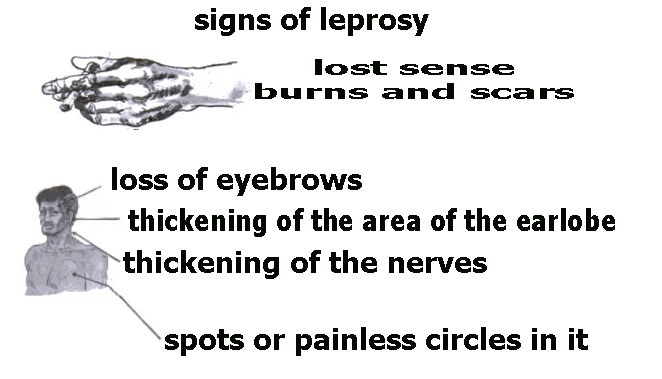about leprosy

something about leprosy
leprosy is also known by another name that is leprosy or Hansen's disease is a disease that attacks the skin, the peripheral nervous system, the mucous membranes of the upper respiratory tract, and the eyes. apabiala a person attacked by leprosy disease can cause sufferers suffer numbness.
Leprosy is caused by a type of bacteria that takes 6 months to 40 years to develop in the body. signs and symptoms of leprosy may appear after bacteria infect the patient's body for 2 to 10 years.
although it had once become a dreaded disease, leprosy is currently classified as a disease that is very easy to treat. but ironically, to date some areas of Indonesia are still considered endemic areas of leprosy by the World Health Organization or WHO.
As for the symptoms and signs of leprosy are difficult to observe and appear very slowly. some of them are:
- Numb. Can not feel the temperature change until the loss of sensation
touch and pain in the skin. - Enlargement of blood vessels, usually around the elbows and knees.
- Changes in shape or abnormalities on the face.
- Nasal congestion or nosebleed.
- Appears wound but does not hurt.
- Eye damage. Eyes become dry and rarely flicker is usually felt
before the big-sized ulcer came up. - Weak muscles or paralysis.
- The loss of fingers.

WHO classifies leprosy into two types based on the conditions of skin lesions patients, namely:
- Paucibacillary. There are skin wounds without bacteria causing leprosy on leprosy in the leprosy
skin. - Multibacillary. There are skin lesions with leprosy bacteria on leprosy in spots
skin.
Causes of Leprosy and Risk Factors
Mycobacterium leprae bacteria is a major cause of leprosy. These bacteria grow rapidly on the cooler body parts such as hands, face, legs and knees.
M. leprae is a type of bacteria that can only grow in certain human cells and animals. The mode of transmission of this bacteria is through the fluid from the nose that usually spreads into the air when the patient coughs or sneezes.
In addition to the underlying cause, there are also factors that may increase a person's risk for developing the disease. Some of these risk factors include:
- Make physical contact with animal spreader leprosy bacteria without sheath
hand. Some of them are armadillo and African chimps. - Perform regular physical contact with leprosy patients.
- Reside in endemic areas of leprosy.
- Suffers from genetic defects in the immune system.
Leprosy Diagnosis
Most cases of leprosy are diagnosed based on clinical findings, because patients usually live in areas with minimal laboratory equipment. White or red spots on the numbing skin and peripheral nerve thickening (or nerves located under the skin can be palpable enlarged and even visible) are often used as a basis for clinical diagnostic considerations. In a leprosy endemic area, a person may be considered leprosy if it shows one of the following two main signs:
- The presence of patches on the numb skin.
- Samples from a positive leather swab there are bacteria that cause leprosy.
Treatment of leprosy
The majority of leprosy patients diagnosed clinically will be given a combination of antibiotics as a treatment step for 6 months to 2 years. Doctors should ensure the type of leprosy as well as the availability of medical personnel who oversee the patient to determine the type, dose of antibiotics, and the duration of treatment.
Surgery is generally performed as a follow-up process after antibiotic treatment. The purpose of surgical procedure for leprosy patients include:
- Normalize the function of damaged nerves.
- Improve the shape of the body of the disabled.
- Restore limb function.
- The risk of leprosy complications can occur depending on how quickly the disease
are diagnosed and treated effectively. Some complications are possible
occurs if late leprosy is treated:
Numbness or numbness. Loss of sensation feels pain that can make people at risk of injury without being aware of and susceptible to infection.
Permanent nerve damage.
Muscles weaken.
Progressive deformity. For example, loss of eyebrows, defects in the toes, hands and nose